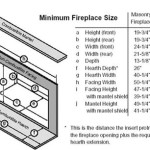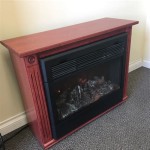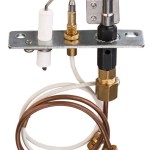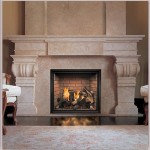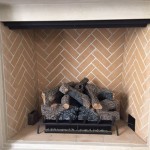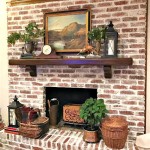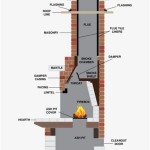How Much Do Propane Fireplace Inserts Cost?
Propane fireplace inserts offer a convenient and efficient alternative to traditional wood-burning fireplaces. They provide the ambiance and warmth of a fire without the mess, labor, and environmental concerns associated with burning wood. One of the primary considerations when contemplating a propane fireplace insert is the cost. This article will explore the various factors that influence the price of propane fireplace inserts, providing a comprehensive overview to aid in making informed decisions.
Understanding the overall cost involves more than just the initial purchase price. It encompasses installation fees, the cost of the unit itself, and potential ongoing expenses like propane fuel and maintenance. Factors such as the size of the insert, its features, the complexity of the installation, and regional pricing variations all contribute to the total cost.
Factors Influencing the Initial Cost of Propane Fireplace Inserts
The initial cost of a propane fireplace insert is determined by several key features and variables. Understanding these factors is essential for budgeting and selecting the appropriate insert for specific needs and applications.
Size and Heating Capacity: Larger inserts with higher heating capacities generally cost more than smaller, less powerful models. Heating capacity is measured in British Thermal Units (BTUs), and a higher BTU rating indicates the insert's ability to heat a larger area. When selecting an insert, it’s important to match the BTU output to the size of the room or area intended to be heated. An oversized unit can lead to overheating and wasted energy, while an undersized unit may not provide adequate warmth.
Features and Aesthetics: The features included in a propane fireplace insert significantly influence its price. Models with advanced features like remote controls, thermostats, programmable timers, and variable flame height settings command a higher price. Aesthetic features such as realistic log sets, decorative fronts, and interior brick panels also contribute to the overall cost. More intricate and visually appealing designs often come with a premium price tag.
Brand and Quality: Established brands known for their quality, durability, and performance typically command higher prices. These brands often invest in research and development to improve the efficiency and longevity of their products. Opting for a reputable brand can provide peace of mind, knowing that the insert is backed by a warranty and reliable customer support. While cheaper alternatives may be available, they may not offer the same level of performance, reliability, or longevity.
Ventilation Type: Propane fireplace inserts are available in two primary ventilation types: direct vent and vent-free (or ventless). Direct vent inserts are generally more expensive to install because they require a venting system that exhausts combustion gases to the outside. However, they are considered safer because they don't release combustion byproducts into the home. Vent-free inserts are less expensive to install because they don't require venting, but they release combustion byproducts into the living space. While vent-free models are equipped with oxygen depletion sensors for safety, some concerns remain about indoor air quality. Therefore, direct vent inserts are generally the preferred choice, despite the higher installation cost.
Efficiency Ratings: Inserts with higher energy efficiency ratings tend to be more expensive upfront, but they can save money in the long run by reducing propane consumption. Energy efficiency is measured by the Annual Fuel Utilization Efficiency (AFUE) rating. An insert with a higher AFUE rating converts a greater percentage of the fuel into usable heat, resulting in lower fuel costs. Consider the long-term savings when evaluating inserts with different efficiency ratings.
Installation Costs Associated with Propane Fireplace Inserts
The cost of installing a propane fireplace insert can be a significant portion of the overall expense. The installation process typically involves several steps, each with associated costs. Factors such as the existing fireplace setup, the type of venting required, and local labor rates influence the final installation price.
Existing Fireplace Preparation: Before installing a propane fireplace insert, the existing fireplace may need to be prepared. This can include cleaning the firebox, removing any debris, and inspecting the chimney for any damage or obstructions. If repairs are needed, such as chimney lining or masonry work, these costs will add to the overall installation expenses. The need for significant chimney repairs can substantially increase the total project cost.
Venting System Installation: As mentioned earlier, direct vent inserts require a venting system that exhausts combustion gases to the outside. The cost of installing the venting system depends on factors such as the length of the vent run, the type of venting material used, and the complexity of the installation. Installing a new venting system can be more expensive than utilizing an existing chimney, but it ensures proper ventilation and safe operation of the insert. Vent-free inserts, while eliminating venting costs, may still require minor adjustments to the fireplace opening to ensure proper fit and safety clearances.
Gas Line Connection: A qualified technician or licensed plumber must connect the propane fireplace insert to a propane gas line. This involves running a gas line from the propane source (either a propane tank or a natural gas line, with a conversion kit) to the fireplace insert. The cost of this connection depends on the distance between the gas source and the fireplace, the type of piping used, and local labor rates. It is crucial to ensure that the gas line is installed safely and according to local codes and regulations.
Electrical Connections: Some propane fireplace inserts require electrical connections for features like remote controls, thermostats, and blowers. The cost of electrical work depends on the availability of an electrical outlet near the fireplace and the complexity of the wiring. If a new electrical outlet needs to be installed, this will add to the overall installation cost. Ensure that the electrical work is performed by a licensed electrician to ensure safety and compliance with electrical codes.
Labor Costs: Labor costs vary depending on the region and the experience of the installer. It is advisable to obtain quotes from multiple installers to compare prices and services. When selecting an installer, consider their experience, reputation, and whether they are licensed and insured. While it may be tempting to choose the lowest bid, it is important to prioritize quality and safety to ensure a proper and reliable installation.
Ongoing Expenses of Propane Fireplace Inserts
Beyond the initial purchase and installation costs, propane fireplace inserts incur ongoing expenses. These expenses primarily relate to propane fuel costs and routine maintenance tasks.
Propane Fuel Costs: Propane fuel costs fluctuate based on market conditions, regional pricing, and the quantity purchased. The amount of propane consumed by the fireplace insert depends on factors such as the size of the insert, the heating capacity, the frequency of use, and the thermostat settings. Monitoring propane prices and purchasing propane in bulk during off-peak seasons can help reduce fuel costs. Also, using the fireplace efficiently by setting appropriate thermostat settings and minimizing unnecessary usage can further lower propane consumption.
Maintenance and Repairs: Regular maintenance is essential to ensure the efficient and safe operation of a propane fireplace insert. This includes cleaning the burner assembly, inspecting the venting system, and checking the gas connections. Annual inspections by a qualified technician are recommended to identify and address any potential issues. Repairs may be necessary over time to replace worn or damaged components. Budgeting for regular maintenance and potential repairs can help prevent costly breakdowns and extend the lifespan of the insert.
Cleaning and Upkeep: Cleaning the glass front of the insert is necessary to maintain a clear view of the flames. Ash and soot can accumulate on the glass over time, obscuring the view. Use a glass cleaner specifically designed for fireplace inserts to avoid damaging the glass. Regularly dusting or vacuuming the area around the fireplace insert can also help keep it clean and prevent dust buildup.
Filter Replacements: Some propane fireplace inserts have filters that need to be replaced periodically. These filters help to remove dust and debris from the air, improving the efficiency and air quality. Check the owner's manual for specific filter replacement recommendations.
In summary, understanding the various factors that influence the cost of propane fireplace inserts – including the initial purchase price, installation expenses, and ongoing operating costs – is crucial for making an informed decision. By carefully evaluating these factors and comparing different models and installation options, one can choose a propane fireplace insert that meets their heating needs, aesthetic preferences, and budget considerations.

Gas Fireplace Insert Cost Forbes Home

How Much Does A Gas Fireplace Cost Fireplaces Direct Learning Center

Estimated Page Fireplaces Stoves Inserts Wood Gas Pellet

How Much Does A Gas Fireplace Cost Fireplaces Direct Learning Center

Gas Fireplace Cost Guide Unit Add Ons Installation More

How Much Does A Gas Fireplace Insert Cost To Install 2024

How Much Does A Fireplace Insert Cost

Gas Fireplace Inserts Pros And Cons Of Ventless Fireplaces

Gas Fireplace Insert Propane Regency Vermont Castings Napoleon

How Much Does A Gas Fireplace Insert Cost To Install 2024
Related Posts


